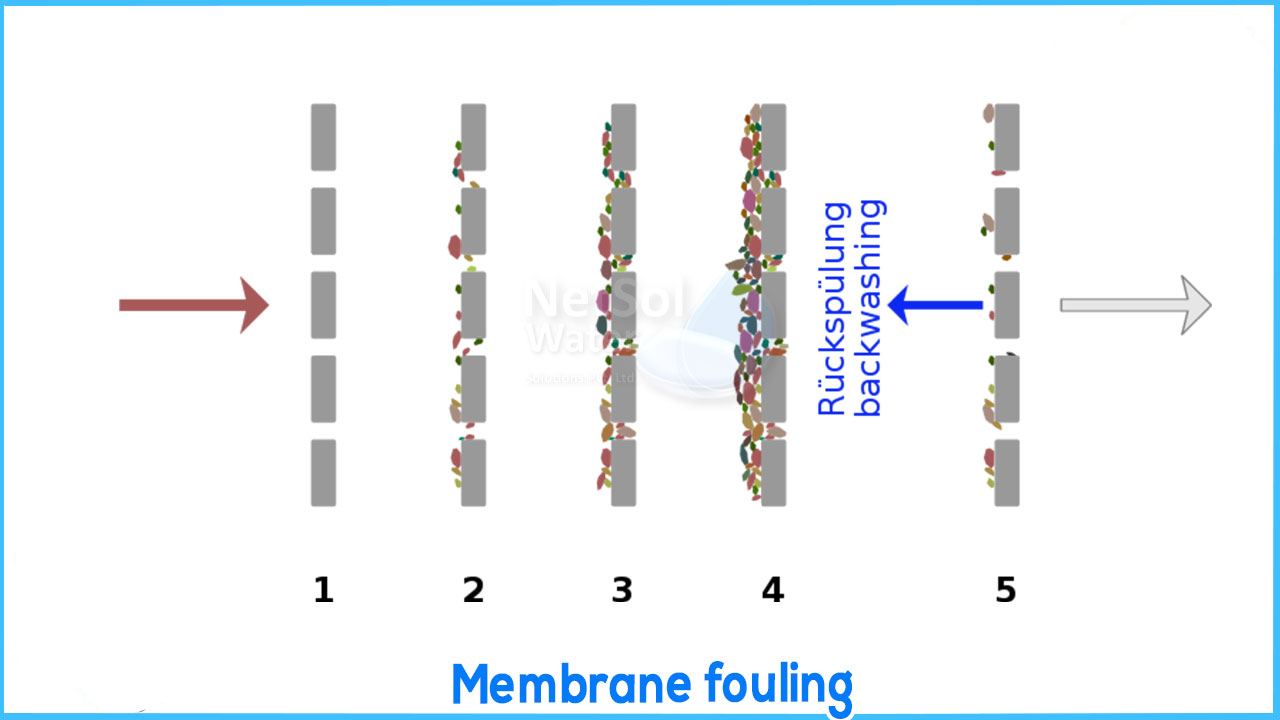Membrane fouling is the most prevalent problem that microfiltration (MF), ultrafiltration (UF), reverse osmosis (RO), and nanofiltration (NF) systems face. While it is not always possible to completely eliminate membrane fouling, there are usually measures to reduce its severity.
Membrane filtering systems separate the treated (filtrate) from the waste stream by removing contaminated solids from the feed stream (retentate). The pollutants should ideally be flushed away with the retentate stream or removed from the membrane unit during a regular cleaning cycle. However, elements in the bulk stream can precipitate out of solution, crystallize, adsorb to the membrane, or otherwise obstruct the flow of the permeate through the filter unit under certain circumstances.
WHAT CAUSES MEMBRANE FOULING?
Microfiltration (MF), ultrafiltration (UF), reverse osmosis (RO), and nanofiltration (NF) are all membrane filtration techniques that use semi-permeable membranes to absorb particles from liquids. Membrane fouling occurs when pollutants are deposited on the surface of a filter membrane, preventing liquids from passing through the pores. Fouling can be caused by a variety of circumstances, including the presence of excessive biological, colloidal, and/or organic particles in the source water, an incorrect membrane material selection, and/or improper process conditions including flow rate, temperature, and pressure.
Membrane fouling issues can appear gradually or suddenly. Symptoms such as increasing energy expenses and decreased membrane flow are common early on in the process. As foulants build up on the membrane surface, more pressure is required to force water through, potentially causing irreversible damage to the membrane and other system components.
POTENTIAL SOLUTIONS
Depending on the procedure, it may be possible to reduce membrane fouling by adjusting the feed stream's stability. The stability and reactivity of constituents in the feed stream are influenced by variables such as pH, temperature, and/or the concentration of dissolved or suspended solids in the feed stream.
This can help with the following issues:
- 1. Precipitation and scaling can be avoided by adjusting the pH, temperature, and concentration of the feed stream. This will help to prevent salt precipitation, which can lead to scale deposits on membranes.
- 2. Adjustments to temperature and/or pH can assist minimize protein denaturation and associated fouling difficulties in streams with considerable protein content, notably those utilized in dairy production.
- 3. Biofouling: Microorganisms, plants, algae, and other biological pollutants thrive in warm, low-flow situations, where they can build a biofilm on membrane elements. Adjusting the feed stream's temperature, flow rate, or pH can limit the growth of biological pollutants and reduce biofouling in some circumstances.
CLEANING ON A REGULAR BASIS
A regular cleaning schedule can help keep foulants from accumulating on the membrane. To get the most advantage, cleaning cycles should be scheduled regularly or at other regular intervals. Maintenance procedures vary based on the type of contaminants and the architecture of the membrane filtration system, and can include one or more cleaning processes, such as:
- 1. The employment of physical force to dislodge pollutants from the membrane and flush them out of the system is known as mechanical cleaning. Backward or forward flushing, in which water or a cleaning solution is pumped through the unit at a faster speed or greater pressure than in a typical service cycle, creates turbulence that eliminates foulants from the membrane, are common ways. To increase turbulence, air is introduced to the backwash/forward flush solution in a process called as air scouring.
- 2. Detergents, caustics, acids, antiscalants, and dispersants are used to loosen and remove foulants from membrane surfaces during chemical cleaning. Cleaning chemicals are chosen based on the pollutants present, with the membrane material also taken into account to ensure that the chemicals employed do not harm it.
SYSTEM DESIGN
Membrane fouling is best avoided by careful planning and design. When changing a membrane or installing a new system, there are many variables that play a part in proper system function for a membrane filtration system. Each of these variables should be taken into account when replacing a membrane or installing a new system. These are some of them:
- 1. Membrane material: Filtration membranes can be made from a wide range of synthetic polymers, ceramics, and metals. Membrane properties such as surface ionic charge, hydrophobicity, and pH tolerance range determine whether the membrane will be resistant to fouling and how well it will tolerate process conditions and the required maintenance regimen.
- 2. Membrane pore size: Pore size is the most important component in ensuring that a membrane filtering unit removes specified pollutants efficiently. Furthermore, by maximizing permeate flux in light of other aspects such as feed water quality, temperature, and salt concentration, choosing the right membrane pore size can help to avoid fouling.
- 3. Conditions of use: Temperature, pH, transmembrane pressure, and flow rate are all factors that can exacerbate membrane fouling. Foulants will not collect on the membrane surface if these variables are balanced in a well-designed system.
Because of the complexities of these aspects, it's generally preferable to consult with a water treatment expert to completely assess your process's demands and conditions. To establish an ideal separation solution that minimizes membrane fouling, a specialist can conduct treatability studies, membrane autopsy, and pilot testing.




